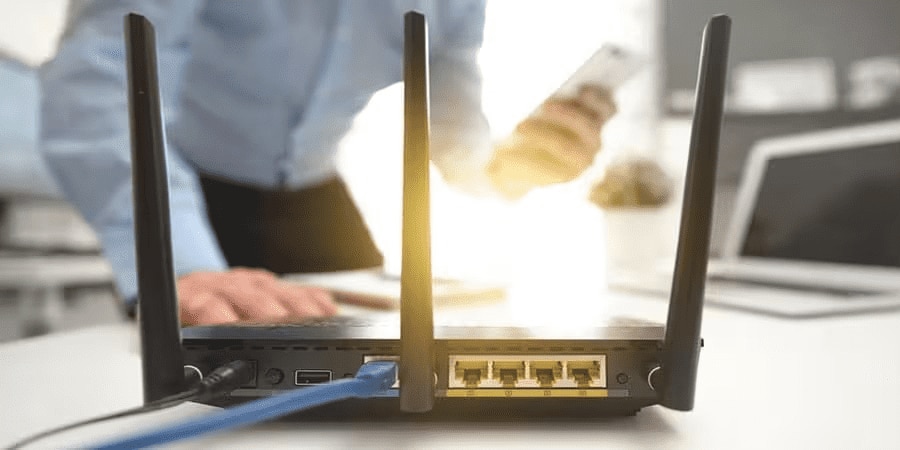
How To Update Router Firmware: A Step-by-Step Guide in 2024
Why Updating Your Router’s Firmware Matters
- Security: Router manufacturers release firmware updates to address newly discovered security vulnerabilities. By installing these updates, you protect your home network from potential threats and unauthorized access.
- Performance: Firmware updates often include bug fixes, stability improvements, and performance optimizations. Updating your firmware can resolve issues and enhance your overall network performance.
HP Support Resources
Access these helpful resources to set up and maintain your network connections.
Creating a Wireless Home Network
Set up and configure your home network in Windows
Wired Network Setup Guide
Learn how to set up and manage Ethernet connections
Troubleshooting Wireless Connections
Resolve common wireless connectivity issues
Managing Internet Connections
Configure and optimize your network settings
HP Support Resources
Access these helpful resources to set up and maintain your network connections.
Creating a Wireless Home Network
Set up and configure your home network in Windows
Wired Network Setup Guide
Learn how to set up and manage Ethernet connections
Troubleshooting Wireless Connections
Resolve common wireless connectivity issues
Managing Internet Connections
Configure and optimize your network settings
Preparing to Update Your Router’s Firmware with the Latest Version
- Use an Ethernet cable to connect your computer directly to the router. Avoid updating wirelessly to prevent interruptions.
- Have the default login information handy for accessing the router's settings. This is crucial for logging into the router's web interface.
- Ensure you know the router's IP address to log into its web interface. This step is essential for navigating to the firmware update section.
- Download the appropriate firmware version for your specific router model from the manufacturer’s official website.
- Ensure a stable power connection to avoid disruptions during the update process.
How to Update Router Firmware: Step-by-Step Instructions
- Ensure you are connected to the router's network, as this is crucial for the update process.
- Log in to your router’s web-based interface using the default IP address (e.g., 192.168.1.1 or 192.168.0.1) or URL (e.g., routerlogin.net).
- Navigate to the firmware or update section, typically found under Settings, Administration, or Advanced tabs.
- Check for available firmware updates. Some routers may have an option to automatically check for and install updates, ensuring your router's firmware is protected against the latest malware and other risks.
- If new firmware is available, proceed with the manual firmware update process by downloading the file and saving it to your computer. This step is critical in keeping the router's firmware updated.
- In the router’s firmware update section, click on the “Choose File” or “Browse” button and select the downloaded firmware file.
- Click on the “Update” or “Upload” button to start the firmware installation process.
- Wait for the update to complete. Do not interrupt the process by turning off or unplugging the router.
- Once the update is finished, the router may automatically reboot. If not, manually restart the router to apply the changes.
Updating Firmware for Specific Router Brands
ASUS
- Access the router’s web interface at router.asus.com.
- Go to Administration > Firmware Upgrade.
- Click “Check” for new updates. If available, click “Firmware Upgrade” to install.
NETGEAR
- Log in to your router at routerlogin.net or routerlogin.com.
- Navigate to Settings > Administration > Firmware Update.
- Click “Check” for updates and if available, click “Yes” to start the upgrade.
TP-Link
- Access the router’s interface at tplinkwifi.net.
- Go to Advanced > System Tools > Firmware Upgrade.
- Click “Check for Upgrade” and if available, click “Upgrade” to install.
Google WiFi
- Open the Google Home app and select your WiFi router.
- Tap on “Settings” and then “Network & General.”
- Select “Firmware update” to check for and install available updates.
Tips for a Successful Router Firmware Update
- Ensure you have a stable internet connection before starting the update process to download the new firmware version.
- Always download firmware files from the manufacturer’s official website to avoid installing malware or incorrect versions. This ensures you're getting the latest security patches and bug fixes included in the new version.
- Verify that the new firmware version is compatible with your specific router model and addresses specific security patches or performance improvements. This step is crucial to ensure the update enhances your router's security and stability.
- Do not interrupt the firmware update process, as this may brick your router, rendering it unusable.
- Consider enabling automatic firmware updates, if available, to ensure your router stays up to date with the latest firmware version, maintaining optimal security and performance.
Troubleshooting Firmware Update Issues
- Restart the router and attempt the update again.
- Verify that you have downloaded the correct firmware version for your router model.
- Ensure the firmware file is not corrupted by downloading it again from the official source.
- Check the router's settings to ensure the firmware update has been applied correctly. Access the router's settings through its IP address, enter your login information, navigate to the firmware update section, and verify if the update is listed.
- Perform a factory reset on the router and reconfigure your settings before attempting the update once more.
Frequently Asked Questions
Can I update my router’s firmware wirelessly?
How often should I update my router’s firmware?
Will updating my router’s firmware erase my settings?
Conclusion
- Router firmware updates are crucial for security and performance.
- Always use a wired Ethernet connection when updating firmware.
- Download firmware files from the manufacturer’s official website.
- Do not interrupt the firmware update process.
- Enable automatic updates or check for updates regularly.

1618950737757863.jpg)









